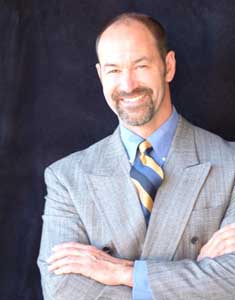-
- Superior Court judge tentatively rejects San Diego County’s medical marijuana suit
- Romney wants courts to force Mass. Legislature to vote on same-sex marriage
- Court hears arguments in porn law that could restrict gay Web sites
- Anti-gay group NARTH offers to ‘treat’ Haggard
- Gay staff, faculty talk of leaving UW
- National News Briefs
- World News Briefs
san diego
Dispelling ‘crystal lore’
Being Alive, Community Prescription Center host forum linking meth and HIV
Published Thursday, 23-Nov-2006 in issue 987
In response to the ravaging problem of crystal methamphetamine abuse within the San Diego GLBT community, Being Alive and the Community Prescription Center sponsored an informative speaker engagement linking meth use with an increased propensity for HIV contraction and transmission. The event took place Nov. 15 and was hosted by Dr. Tony Mills, a private practice proprietor in Los Angeles and assistant professor at the David Geffen School of Medicine, UCLA.
In conducting his power point presentation, covering everything from the history of meth production to harm reduction, Mills dispelled a number of addict presuppositions, characterizing such anecdotal myths as nothing more than “crystal lore.”
Those in attendance spoke freely, sharing beliefs either they or their circle of friends had about meth and its ability to curb or halt HIV reproduction in the body. Mills attempted to eradicate the assumption of meth having the ability to somehow increase T-cell count, hence strengthening the immune system. However, he regretfully admitted that few studies have been conducted surrounding the effects meth has on immune systems replete with HIV.
Mills cited 2005 as a catalyst year for the way scientists began looking at the relationship between crystal meth and HIV. The New York Times reported a possible new strain of drug-resistant HIV in January 2005, more virulent than medical professionals had seen prior. So virulent, in fact, that from the time the patient contracted HIV to the time he developed full-blown AIDS, a mere six months had passed. The patient was described as a gay male who regularly engaged in risky sexual behavior and abused meth.
Shortly thereafter, a confluence of HIV/AIDS specialists and experts met at what Mills called “the largest HIV/AIDS meeting in the world,” where the correlation between meth and HIV was discussed.
“On the stage were the greatest minds in HIV [treatment] … Julio Montaner, David Ho, the creators of the entire science of HIV that we know of today.” Mills said. “The most shocking moment of the conference came when someone asked about the New York case and if crystal meth could have accelerated the transition from HIV to AIDS. To watch these great minds look at each other with blank stares and then for David Ho to take the mic and admit they knew little to nothing about what meth does to the immune system was a bit frightening.”
According to a study included in Mills’ presentation, crystal may increase viral replication in the brain by “five- to 15-fold.” Mills also emphasized that since HIV medication regimens require such painstaking adherence, meds must be taken 95 percent of the time if the patient wishes to remain “undetectable.” And since many HIV-positive meth users take meth as a substitute for their meds, adherence gets placed on the backburner, creating a breeding ground for viral duplication.
Not only is meth a clear and present danger in the positive community, it nearly doubles the rate of HIV infection among negative gay men. There are multiple factors contributing to this trend, including the immediate effect of unfettered sexual arousal and prowess endemic in the nature of the drug. Mills said that oftentimes, following the ingestion of meth, men will become highly aroused but may also experience “limp dick” or “crystal dick,” which by default causes them to act as the passive or receptive partner, thereby increasing already risky behavior. Since inhibitions are lifted due to the euphoria caused by meth, condom use decreases. This is precisely why meth use and HIV incidence rates share such a relative relationship, Mills said.
Mills’ presentation concluded with a message of hope: treatment and recovery. When it comes to escaping the grasps of crystal meth, the struggle is more trying than other addictions, Mills said. Many recovery programs that prove expedient for addictions such as alcoholism are wastes of time and resources in the face of crystal meth. But there are a few techniques like “contingency management” that seem to render effective results, Mills said.
The pragmatism and logic of contingency management makes it a cogent tool in circumventing the dependence on crystal. Often referred to as “pee for pay,” its operation is surprisingly simple: Every time the patient in question is able to provide an in-house, unadulterated urine sample, clear of meth traces, they are rewarded with incentives ranging from cash to testosterone shots. Mills mentioned doling out Botox shots as positive reinforcement for his patients, which provided a much needed dose of comic relief.
The event was part of Being Alive’s outreach program, a key player in AIDS advocacy for San Diego County. The organization provides peer-based social services, social events and a speakers bureau. To volunteer for Being Alive or to learn more about the services they provide for the HIV-positive community, visit www.beingalive.org. To receive more information regarding crystal meth treatment and recovery, visit www.thecentersd.org or www.uclaisap.org.
|
|
Copyright © 2003-2025 Uptown Publications


